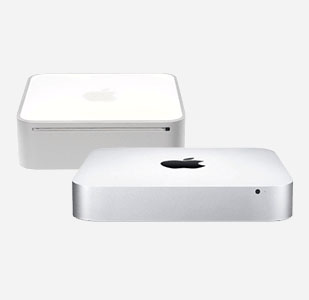Find An Refurbished iPhone at Mac of All Trades
02 05, 20
The first iPhone debuted in 2007, and promptly took over the smartphone market, which until that point had been dominated by Canada’s Blackberry, a buttoned-up take on the smartphone that found its main audience in the jet setting business class of the pre-recession West. Up until the iPhone’s release, smartphones were seen as specialized technology: useful, but unnecessary. They were the province of workaholics—jittering, high-powered lawyers; publicists with shark-toothed smiles. Expensive and difficult to use (insofar as they operated using watered-down hardware that made internet use a singular chore), these phones had limited commercial appeal, given that the common man—Joe Six-pack back then—did not feel compelled to clack through a series of bland, pixelated pages only to reach a poorly-formatted mobile web-page some ten minutes later. Among the business class, however, Blackberries did attain the sobriquet “Crackberries” due to their addictive nature. These were nifty little devices, despite the common frustrations.
Back in the mid-aughts, the most common form factor for a smartphone (known as a “keyboard bar”) involved a black slab of the plastic screen below which ran a full QWERTY keyboard. The Blackberry was presented as the pinnacle of this style. A few, idiosyncratic devices hid their keyboards beneath sliding screens, which would slickly reveal the buttons underneath.
In 1993, Apple released the first of its MessagePads (think of it like the granduncle to the iPad), a portable device that featured the first touchscreen in the Apple product line. The MessagePad’s touchscreen operated on a principle of resistance. It sensed when pressure was applied to the screen and reacted accordingly. Back in 1993, this was a big deal. It paved the way for pen computing. Fourteen years later, however, Apple changed its approach to touchscreens and changed the cellular world with it. The iPhone, when it debuted, used what’s called a capacitive touchscreen. A capacitive touchscreen uses the conductive properties of an object (such as a finger) to sense commands. This means that the touchscreen does not rely on pressure, making it more responsive to gestures such as swiping or pinching, neither of which require much force.
The touchscreen lent the iPhone a sense of ease. Consumers could operate the phone without having to cramp over Blackberry’s tiny keyboard. Combine this with the phone’s muscular hardware, which made logging on to the internet a thousand times easier, and the iPhone, all of a sudden, became the smartphone everyone wanted to get their hands on. A star was born.
At Mac of All Trades, we have the refurbished iPhone you need. Our stock includes all iPhone models, including the latest offerings.
The iPhone 6, released back in 2014, was the first of the iPhone line to feature the large screen now common across iPhone models (4.7 inches as opposed to 3.5). With a thickness of 6.9 millimeters, the iPhone 6 is sleek as they come. Constructed from 6000 series aluminum, the iPhone 6 comes in gold, silver, and space gray finishes. This was the first iPhone to come with Retina Display technology, which projects a crisp, print-like image by crowding tons of pixels into as small a space as possible so that the pixel density exceeds what the human eye can process, creating the illusion of a de-pixelated screen. The iPhone 6 features LTE advanced connectivity, with support for over twenty LTE bands, resulting in lightning-fast download times and wonderful wi-fi performance.
Let’s leap ahead a few years now, to the release of the iPhone X, in 2017. Made from stainless steel and glass, the X used OLEDs (Organic Light Emitting Diodes) to create an even better display. When an OLED screen goes black, its pixels produce no light. This means that the contrastive capabilities of its screen are greatly enhanced. The X replaced the classic iPhone home button with Face ID technology, which uses sensors to scan its user’s face and unlock the device. The iPhone X got rid of the bezel seen on all previous models of the iPhone. With the bezel abandoned, the X’s user operates the X with gestures rather than relying on a home button.
Each refurbished iPhone at Mac of All Trades is tested thoroughly for functionality. Using a 40-point system of proprietary inspection, we make sure that each component of our iPhones is up to snuff. The screen, the processor, the graphics, the CPU—we analyze each of these and get them working their best. After the phone is tested, we assign it a condition from Good to Excellent, after which we label the phone with its specifications and place it on our site. Because our business is providing you with the highest quality product for the lowest price, we offer each of our phones with a complementary hardware warranty. Come shop at Mac of All Trades today for your refurbished iPhone.















